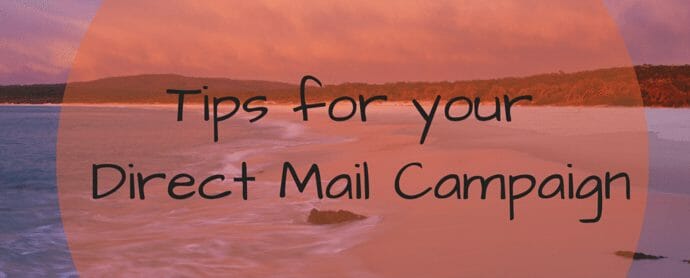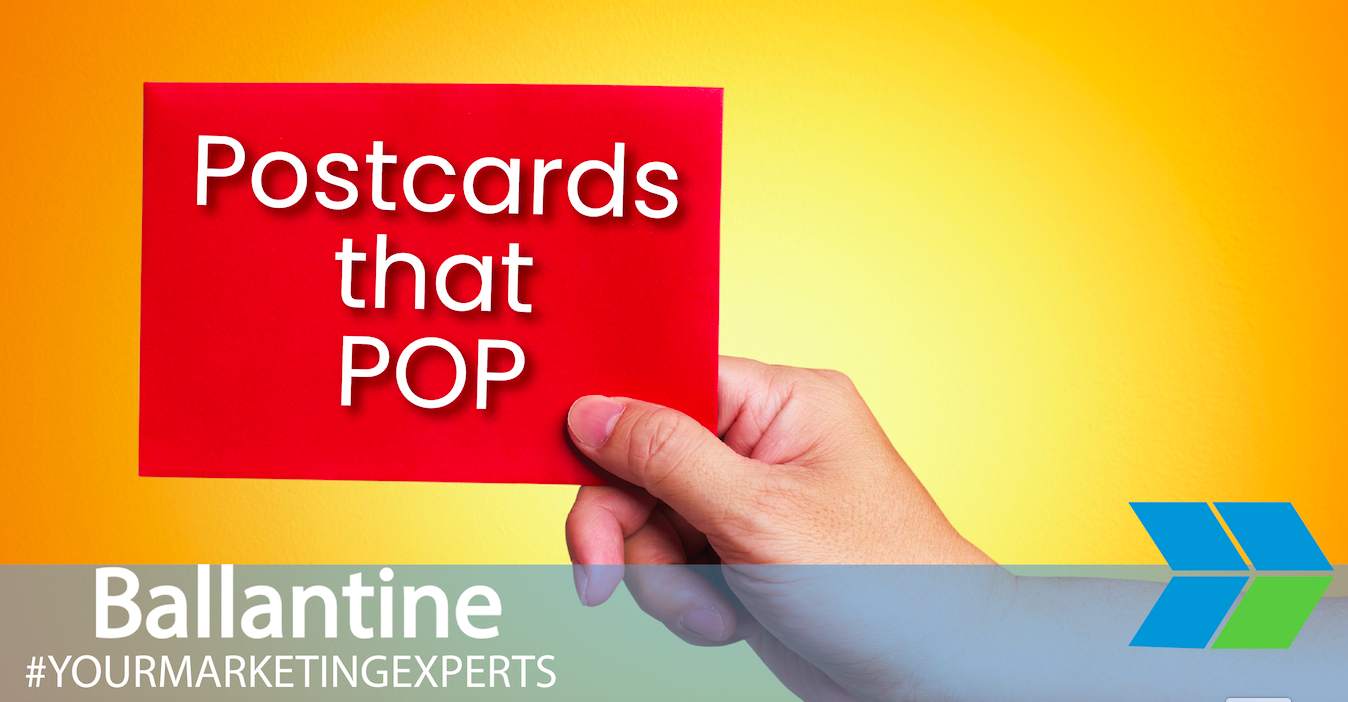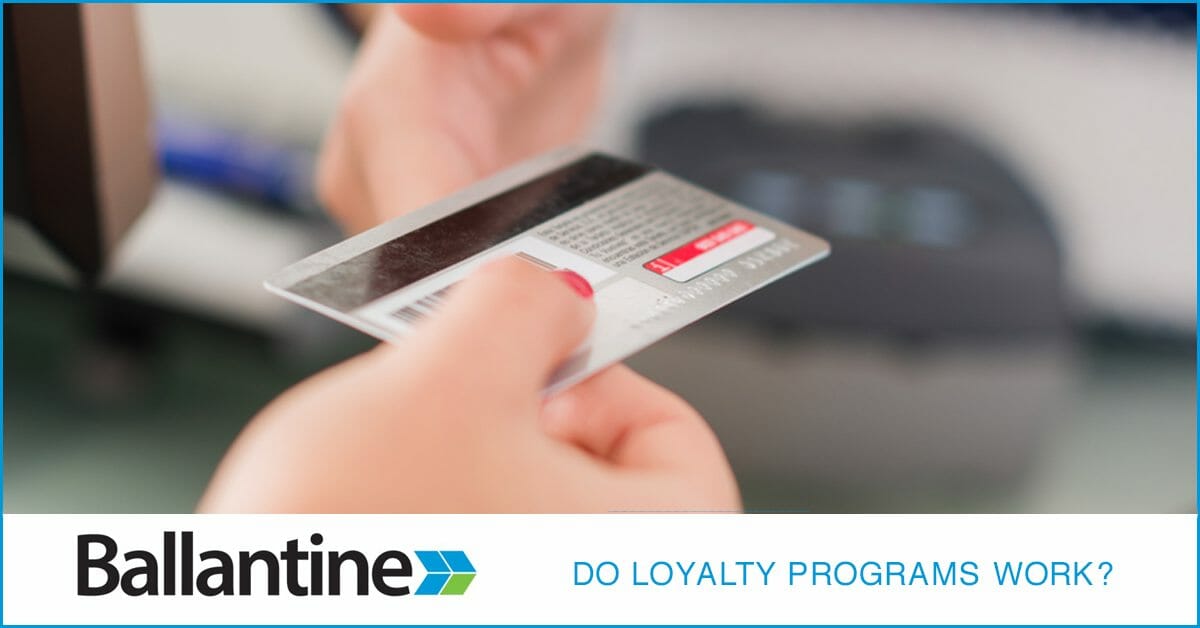Quick Summary
Postcard marketing is effective and will remain effective in 2022. Postcard marketing provides measurable results, accountability, and data that companies can use in future marketing campaigns for success. Traditional direct mail postcard marketing campaigns capture each of these elements while attracting the attention of consumers at the same time.
Read our guide to learn exactly how a successful postcard marketing campaign works.
Quick Links
Why It Works
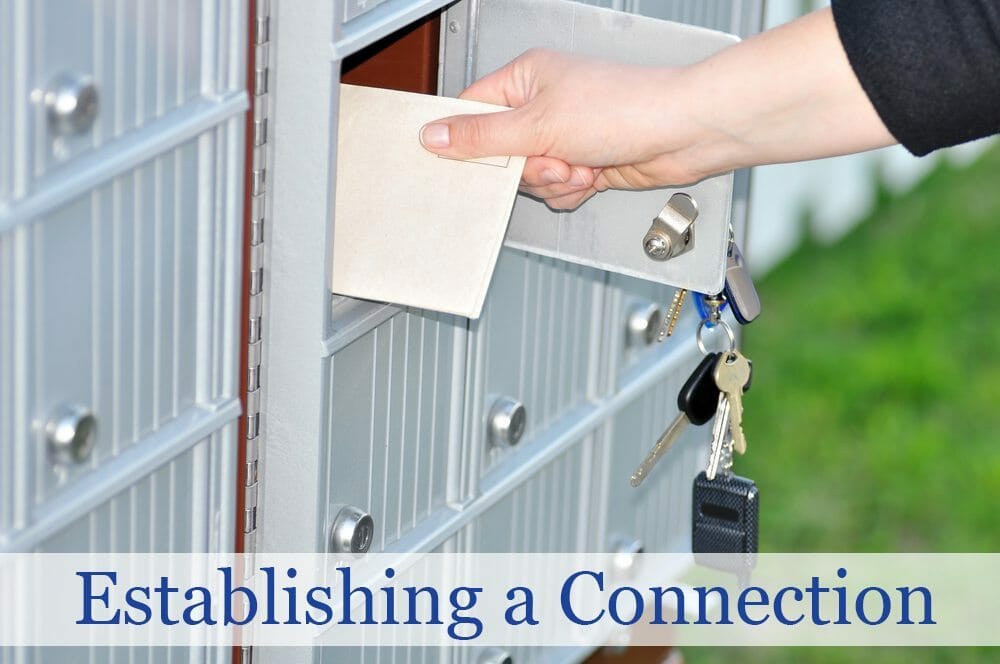
Direct mail marketing pieces provide customers with something they can physically hold in their hands. A connection with the company forms as customers hang it on their refrigerators or other prominent areas in their home. Each time they see that promotional marketing postcard, it sparks a reminder to interact with that company, even if the interaction is merely looking up the website for more information.
Postcard marketing works to put a promotional message in front of a potential customer from the moment it comes out of the mailbox. Adding a simple promotional offer to customers who receive that postcard allows a company to track the campaign response rate by comparing customer engagement levels with the total number of postcard mailers sent out. The mailing list information for a particular postcard marketing campaign can be utilized for future marketing campaigns as well.
What a Promotional Postcard Should Say
The content a company uses on a postcard is an essential ingredient to running a successful marketing campaign. The time and effort that a marketing department puts into identifying potential target market customers will be lost if the message on the postcard is ineffective. Postcards have a small workspace, so a company must focus on creating a content message that captures attention almost instantly when potential customers come into contact with the postcard for the first time.
The central focus of a promotional postcard needs to be on the action that a company wants potential customers to take upon receipt of the postcard. Make it a clear and concise action that motivates readers to follow through on that action as quickly as possible. Outside of the action message, remaining content should only be made up of essential details such as contact information, a Web address and how customers can follow through on the action request. Providing irrelevant information could result in the action message getting lost in the content delivery. When that happens, customers will see little value in the postcard and toss it out without taking the time to hunt for the promotional message a company offers.
The Importance of Power Words in Postcard Content

Postcard marketing pieces provide little room for error both in physical space and content messaging. A company only has a few seconds to capture the attention of a potential customer before that customer decides what action to take. Word choices should present a powerful message that pushes a reader to find out more about the company.
Using power words caters towards the natural emotions of consumers and sparks an interest in hanging on to a postcard for further engagement with the company. These words make consumers feel as if they are missing out on something if they do not take advantage of the offer on that postcard. That fear of missing out is what will prompt them to take advantage of the promotional offer and give a company, your company, a try.
Power words work to grab attention by asking a question, presenting an offer, highlighting the benefits of a company, and selling a product or service. Using power words correctly boosts revenue, increases sales and expands customer databases. Here are a few postcard examples of power words that are used in effective postcard marketing strategies:
- Easy
- New
- Guarantee
- Bargain
- How to
- Save (money, time, or another item)
- Free
- Breakthrough
Power words can also create an impactful presentation of the products and services that a company offers. Using them provides a way to demonstrate how a product or service benefits a customer by resolving a problem or fulfilling a desire. Here are a few examples of power words that are beneficial in describing a product or service:
- Quality
- Excellent
- Superior
- Valuable
- Expert
- Personalized
- Genuine
- Exciting
The use of power words is also effective in describing a promotional offer to a potential customer on a marketing postcard piece. These offers need to grab attention and bring a potential customer to the next step of the purchase process almost instantly. Here is a list of power words that get customers to engage with a company as soon as possible upon receipt of that postcard:
- Act Now
- Limited Time
- Today Only
- Special Offer
- First Come, First Served
- Deadline
- Bonus
- Don’t Delay
The final impact that power words have on a postcard marketing piece is the ability to motivate the reader towards an action. There needs to be a direction given that states what the next step in the offer process is and how long a customer has to take advantage of that offer. Here is a list of impactful power words that motivate consumers to take the next step:
- Order Now
- Call Now
- Request (catalog, brochure, sample or another item)
- Buy Now
- Complete now (form, survey or another item)
- Log on
Word choices should be as audience-specific as possible to convey power. These are keywords that customers in a particular industry are already familiar with and use to conduct online searches for additional information or problem resolution. Incorporating power words into a postcard’s content raises the level of response engagement that a company stands to receive.
How to Use a Marketing Postcard
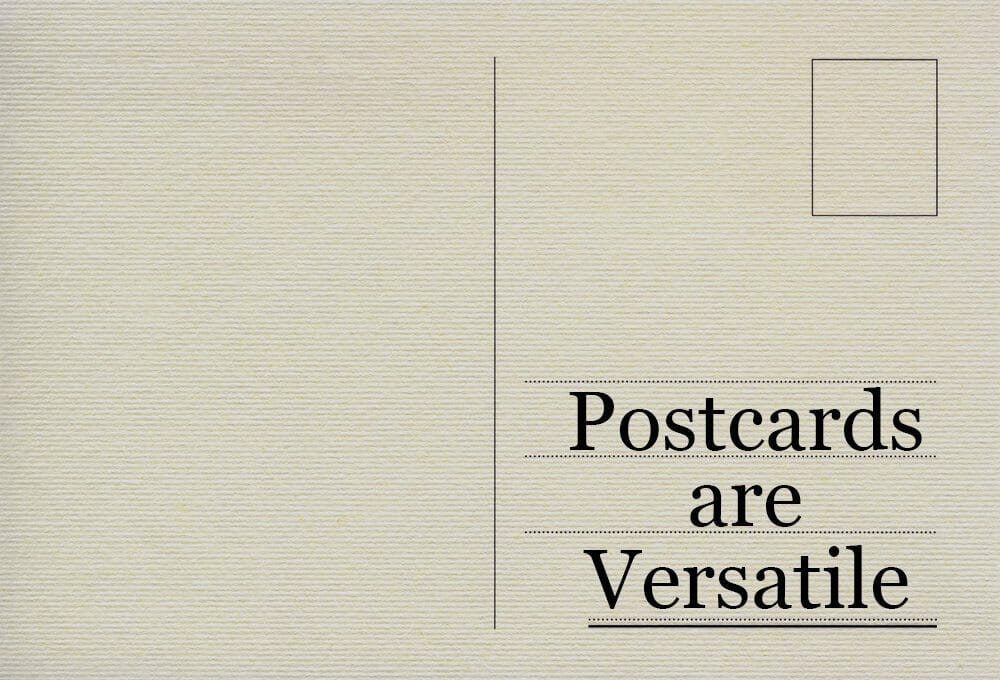
Companies utilize postcards for a variety of reasons. They may wish to announce a new product or service that will soon be available or promote an upcoming sales event. Postcards are a great way to announce the arrival of a new staff member or branch location of a business. Invite customers to sign up for a webinar that covers the features and benefits of a popular product or service. Offer a free sample of a new product or encourage customers to come test out new products one evening when light refreshments will be available as well. The possibilities for postcard use are as expansive as the imagination of the company running a postcard marketing campaign.
Postcard Size
As with other marketing efforts, postcard size matters. The essential aspect of a postcard marketing campaign is having it stand out against other pieces of mail that a potential customer may receive that day. A postcard that is too small runs the risk of getting lost in the shuffle. Likewise, a postcard that is too big stands the chance of being thrown away for being awkward or burdensome to handle.
Available Sizes
Postcards are available in just about any size that a company could want. A select number of size options fall within the standard size category and will not cost more money to produce. Sizes in this category are as follows:
- 4-inch x 6-inch
- 25-inch x 6-inch
- 5-inch x 7-inch
- 5-inch x 8.5-inch
- 6-inch x 9-inch
- 6-inch x 11-inch
- 5-inch x 11-inch
Additional postcard sizes are available, and some printing companies provide the option for a company to create a custom postcard size that better suits the particular needs of an individual campaign. Any size postcard that falls outside of the standard category may price a little higher than a standard postcard. The printing process requires the use of non-standard paper to create and, therefore, a printing company may charge more as a result.
Why Size Matters

There are several reasons why the size of a postcard matters. Certain elements of a postcard marketing campaign, such as printing and mailing, are set according to the size of a postcard. As mentioned above, printing companies may charge more to produce postcards that fall outside of the standard size category. Additional expenses for printing and mailing impact the overall budget amount for a particular postcard campaign.
The United States Post Office also determines the pricing structure for a postcard based on its size. According to their guidelines, postcards must be rectangular and a maximum of 4.25-inches by 6-inches with a thickness of 0.016-inch to have a first class mail classification. Any postcard outside of these guidelines receives a classification of a letter or large envelope. These classifications come with an additional postage cost.
Best Postcard Size for Marketing
What size postcard is most effective? It depends on your campaign. A starting point for determining what size postcard to use for a promotional campaign is to pinpoint where the postcard will end up after delivery. Standard sizes are ideal for traditional mailbox delivery. Increasing the size to 13-inches by 17-inches will still work for a traditional mailbox, however, the postcard may require folding to fit inside the mailbox.
A postcard that is 6-inches by 11-inches is the best postcard size to ensure that it stands out, catches a customer’s eye quickly and motivates them to take action. Smaller size postcards of 5.5-inches by 8.5-inches are cost-effective, which can be beneficial when a campaign is on a tight budget.
The ideal size for a postcard varies from one company to the next. It is a decision that centers on the type of campaign a company runs, the message that customers will receive and the overall budget of a campaign.
Postcard Design

The overall design of a postcard is critical to the success of a postcard marketing campaign. Taking the time to create powerful content and select the perfect size postcard will mean nothing if the design does not optimize these elements. Several elements are crucial for an effective postcard design.
Headlines
Postcard marketing campaigns work to stand out from the crowd and present the reader with an opportunity to take immediate action and receive a benefit. Creating attention-grabbing headlines makes that happen. Bold headlines create an impact that action needs to be taken now if one does not want to miss the promotional offer. Use power words inside of noticeable boxes or other eye-catching shapes. Use bright colors that stand out from the postcard’s background. Draw the reader’s attention to the headline first, capture interest at that point and motivate that individual to take action.
Visual Balance
Avoid a postcard design that places too much color and content in a small space. Direct mail postcards that are overbearing and have every inch of the paper showcasing colors, words or graphic designs will turn customers away from reading the postcard. When designing a postcard, strike a balance between white space and color features. Use one main color with a few accent colors, or stick with a one-color presentation. Keep the promotional message as the focal point and design the visual balance around that.
Printing on the Back
An often overlooked presentation aspect of postcard designs is the space on the backside of the card. The backside of a postcard is almost as beneficial as the front side since most postal carriers place postcards inside mailboxes with the front side facing down. That means customers are reaching into their mailbox and coming in contact with the back side first. This provides companies with a great opportunity to highlight a creative promotional offer, company information, and benefits that a customer stands to receive by taking advantage of what the postcard offers. Once their attention has been grabbed, a customer turns the postcard over to read the promotional message and moves one step closer to taking a next step with a company.
Follow USPS Rules
An important aspect of designing a postcard to be mailed is adhering to the United States Postal Service’s requirements for addressing and labeling postcards. Each address must be printed using a pen or permanent marker, and have the proper capitalization in place. Avoid using commas or periods when addressing each postcard. When possible, include the four-digit number that follows a standard zip code. The customer’s address should go in the center of the postcard towards the bottom, and the company’s return address goes in the upper left-hand corner of the postcard. Before sending your piece out for mailing through the USPS, make sure the proper amount of postage has been applied.
Postcard Colors

Upon receiving their mail each day, customers skim through it while listening to their children talk about school or a significant other share the latest office gossip. It is an absent-minded process that creates a pile on the table. This is the only chance a company has to avoid having a postcard going into the ‘discard’ pile.
One of the best ways to keep this from happening is to select color combinations that work to make a postcard stand out from the crowd of mailing pieces sitting in a customer’s mailbox. A variety of colors come together to create a colorful postcard product that clients will be unable to throw away.
- Orange and Blue
Both of these colors are bright and do a great job of standing out in a crowd when by themselves. Together, they create a color display that customers will be unable to ignore. Consider using a blue background with the attention-grabbing headline in orange. It will capture the customer’s attention instantly.
- Green and Red
The color green symbolizes the earth while red represents fire. The two colors combine to create an impressive color combination that makes a postcard message catch the reader’s attention the moment the postcard comes out of the mailbox. It is a common color scheme for a variety of marketing and promotional pieces because of its naturally eye-catching appeal.
- Black, Yellow, and Orange
Black is a color that demands attention all on its own. When that color mixes with yellow or orange, the result is a color combination that packs a powerful punch. Many traffic signs use the black and yellow or orange color combination for its visual appeal. The same technique can apply to postcard designs. Create a promotional message in black against a yellow or orange background to send an impactful message.
- Purple and Yellow
Combine purple and yellow color schemes on a postcard to send a message of elegance and importance to customers. Yellow is a warm, inviting color, while purple is a darker, cooler color that still invites readers to the message presentation. It is a color combination that presents a sense of importance in the message that a company offers.
Using One Color
It is equally effective to utilize one color across the entire postcard design. Select a bright color, such as red, blue or green, and pair it with white content lettering or a simple design element as the central focal point of the postcard. Using one color in a bold presentation format works to enhance the promotional message of the postcard. It is easy to read, and the customer will instantly know what the next action to take is.
Benefits of Bold Colors
A basic instinct when selecting colors to use on a postcard may be to stay away from bold colors. However, these color choices can prove to be beneficial in capturing attention and motivating customers to take an action with the company. The entire postcard color scheme doesn’t have to feature bold colors to be effective. A promotional message in a bold color, such as a fluorescent or neon blue, against a black background would create an impressive message presentation.
Avoid using a bold yellow color as yellow is a bright color by itself without any color enhancements. Bright yellow is distracting to the eyes and runs the risk of turning customers away from the postcard without reading the message.
Postcard Mailing

A postcard marketing campaign offers several benefits for a company. It opens the door for potential customers to establish an interest in a company and take the next step in the purchasing process. The beneficial features of a postcard marketing campaign are found in the mailing process as well.
Cost Effective
Postcards require a minimum amount of postage. The postage stamp cost is lower than the stamp that a standard letter requires. However, if your postcard mailing list is rather large, the cost can add up fast. Additional cost savings come from not having to purchase envelopes or pay staff members for stuffing, sealing and mailing those envelopes. Postal discounts are also available when mailing higher volumes of postcards to a single zip code.
Determine Postage Class
There are three main categories that postcards fall into for mailing purposes. Those categories are first class mail, regular class mail, and bulk mail.
- First class mail gives a company the opportunity to send up to 500 postcards at a time for one low price. A company pays $0.34 per stamp to mail each postcard. First class mail receives forwarding services when customers have a new address and return services when an address is incorrect for no additional charge.
- Regular (standard) mail allows a company to send a minimum of 200 postcards at a price of $0.47 per stamp for each postcard that is being sent out. Additional services, such as return receipt request, are available. However, these options are rarely put into place for postcard mailings.
- Bulk mail allows a company to send large quantities of mail by requiring the company to perform a portion of the work that a post office would do upon receipt of the postcards for mailing. Companies must sort postcards by customer zip code and bring the mailing pieces directly to a central mailing facility that the post office brings mail to as well. A company must also obtain a permit and have a postage meter that imprints each postcard with a stamp.
Business Postcard Promotional Campaign
Postcards have a proven track record of being successful marketing campaign tools. It is a fairly inexpensive campaign to run while allowing a company to reach a massive target market segment at one time. Postcards create a message presentation that makes customers feel as if the message is speaking to them and no one else. In the age of modern technology, when most correspondence is electronic and impersonal, a postcard can make a person feel a sense of importance as if the sender truly cares for that individual.
Postcard Campaign Success
A company can take several steps to ensure the success of a postcard marketing campaign. Start by focusing on the mailing list and work to include all potential members of a target market segment that could benefit from a product or service available. Keep the tone of the content friendly yet informative. It paves the way for a warm, inviting interaction with a customer to take place.
Avoid launching into a sales pitch just yet. The point of a postcard is to present a clear, concise call to action for the customer to take. Presenting a sales pitch instead could be a turn-off for the reader.
Plan a postcard campaign around that piece arriving on a Tuesday or Wednesday when possible. The middle of the week is typically a light mail delivery time, so it increases the chances of the postcard receiving more visibility by a customer.
Strategies That Work
A successful strategy can be the difference between a successful postcard marketing campaign and one that stops just short of accomplishing the goal in mind. Follow the 40/40/20 rule which states that campaign success consists of 40 percent quality in a mailing list, 40 percent effectiveness in a promotional offer and 20 percent creativeness in promotional efforts.
Companies also need to have a call to action strategy that motivates readers to take action instead of becoming confused about what the company is asking. An effective call to action strategy gives customers a reason to call, email, visit a website or take other action with a company. Campaign strategies should also focus on the company brand without being overpowering. Place a company logo or slogan in a prominent place on the postcard so that customers can instantly identify with it because they have seen it on other promotional pieces.
Mistakes to Avoid

Postcards are an effective form of marketing when done right. Postcard marketing can be a profitable because it is a great way to both reach new customers, and reward current customers with new offers.
It is possible to make mistakes that can hinder the success of a postcard marketing campaign. Here are a few mistakes that companies should work to avoid when executing a postcard marketing campaign:
- Target the Wrong Audience
A postcard campaign will only be as strong as the audience that receives the postcard. Targeting the wrong market segment will result in a waste of time and money as that audience will have no need for the promotional offer.
- Not Enough Repetition
On average, consumers need to see a piece of information at least four times before it registers in their mind. Sending a single postcard and then moving on with a new promotional message will not have the same effect as a full postcard marketing campaign.
- Missing Contact Information
The focus of a postcard marketing campaign is motivating potential customers to engage with a company. Failing to include contact information leaves a customer with no direction when it comes to the action to take next.
- Absence of Mailing List Seeds
Seeding a mailing list involves a company including family and friends in a mailing list. It provides them with vital pieces of campaign information such as knowing when the postcard arrives and what the final product looks like after going through the mailing process.
Start a Postcard Marketing Campaign
It is easy to start a postcard marketing campaign once the essential details are in place. Start by assembling a mailing list of target market audience members that will benefit from receiving the promotional offer on the postcard.
Design a postcard with your target market in mind by using content that the audience is familiar with. Add a company logo or slogan and a powerful call to action for the postcard to be the most effective. With these elements in place, it is time to print and mail your postcards to your target audience. As the postcards are on the way to the recipients, work on creating a campaign that places the promotional message in front of those potential customers at least three more times.
Conclusion

A postcard marketing campaign gives a company the opportunity to make a powerful first impression with a target market audience. It places a piece of personal information in the hands of consumers who typically only receive financial bills in the mail and email correspondence from family and friends. This also means that the size and design of the postcard are essential ingredients in making it stand out in a sea of bills and junk mail.
Remember to use power words in the content to instantly motivate the reader to take further action with the company as soon as possible. Creating color combinations that work to make a promotional message pop will work towards prompting this action as well. Have effective strategies in place as you design your campaign around the promotional message in the postcards. This will place your company in the position of running a successful postcard marketing campaign.
Still feeling as though this may be a little over your head? Or, do you just want to learn more about marketing campaigns, but just don’t have the time to add this task to your never-ending to-do list? Whether you’re a large or small business, we can help. Contact us today so that we can help you kick off an amazing marketing campaign.
I'm the Director of Digital Services and Partner at Ballantine, a family-owned and operated direct mail & digital marketing company based in New Jersey. and started in 1966 by my great uncle!


